Dementia 13 Blu-ray Movie
HomeDementia 13 Blu-ray Movie 
Blu-ray + DVDHD Cinema Classics | 1963 | 75 min | Not rated | Apr 26, 2011
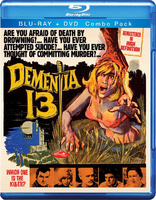
Movie rating
6.3 | / 10 |
Blu-ray rating
| Users | 0.0 | |
| Reviewer | 2.5 | |
| Overall | 2.5 |
Overview
Dementia 13 (1963)
The family members of an Irish family are being killed off one-by-one by one of their own who is after the family's inheritance.
Starring: William Campbell (I), Luana Anders, Bart Patton, Mary Mitchel, Patrick Magee (I)Director: Francis Ford Coppola
| Horror | Uncertain |
| Thriller | Uncertain |
Specifications
Video
Video codec: MPEG-4 AVC
Video resolution: 1080p
Aspect ratio: 1.78:1
Original aspect ratio: 1.85:1
Audio
English: Dolby Digital 5.1
English: Dolby Digital 2.0
Subtitles
Spanish
Discs
25GB Blu-ray Disc
Two-disc set (1 BD, 1 DVD)
DVD copy
Packaging
Slipcover in original pressing
Playback
Region free
Review
Rating summary
| Movie | 3.0 | |
| Video | 2.5 | |
| Audio | 2.5 | |
| Extras | 1.0 | |
| Overall | 2.5 |
Dementia 13 Blu-ray Movie Review
From tiny acorns, mighty oaks grow.
Reviewed by Jeffrey Kauffman April 22, 2011In my recent review of Fiddler on the Roof, I talked a bit about the decline of the big budget film musical, especially those culled from original Broadway tuner sources. My recap of various box office calamities which hit virtually all of the major studios with their musical releases in the late 1960s and early 1970s included two behemoth Warner Brothers films which turned out to be twin albatrosses around the studio’s neck, Camelot and Finian’s Rainbow. Camelot, on paper anyway, probably looked like a sure thing to Warner: it was the huge hit follow up musical to Lerner and Loewe’s iconic My Fair Lady, which had been one of the studio’s most successful adaptations, musical or otherwise, in its entire history, despite the controversy surrounding the non-casting of Julie Andrews as Eliza Doolittle. Finian’s Rainbow, on the other hand, was a rather odd choice for a film adaptation in the tempestuous year of 1968. First of all, the Broadway musical, while certainly a sizable hit and one which spawned several popular song standards (“Old Devil Moon” and “How Are Things in Glocca Morra?” among many others), had actually trod the Great White Way over two decades previously, certainly one of the longer gestation periods for bringing a Broadway smash to the screen, something perhaps more like Development Purgatory than outright Hell. And while the film turned out to be Fred Astaire’s last starring role, and featured a top flight cast which included Petula Clark and Tommy Steele, one of the film’s oddest selections for crew turned out to be its director: Francis Ford Coppola. Coppola himself has spoken about how completely fortuitously this directing assignment came to him, which he has joked stemmed from him simply wandering around the Warner backlot one day. Coppola certainly did not follow in the august footsteps of musical directors like Vincente Minnelli or Stanley Donen. His screen career pre-Finian’s had not been exactly prestigious, with a couple of low budget “nudie” films, two probably not much higher budgeted knock offs for Roger Corman, as well as the proto counterculture comedy You’re a Big Boy Now. Film fans have had a special place in their cultish hearts for Coppola’s Corman efforts. Both Dementia 13 and The Terror offer a peek inside a developing artist’s attempts to get a foothold in the film industry, and both are fascinating studies in their own way, even if neither would ever be called outright successes, let alone a masterpiece. Both Corman films are debuting on Blu-ray courtesy of public domain niche label HD Cinema Classics/Film Chest, and first up is Dementia 13.
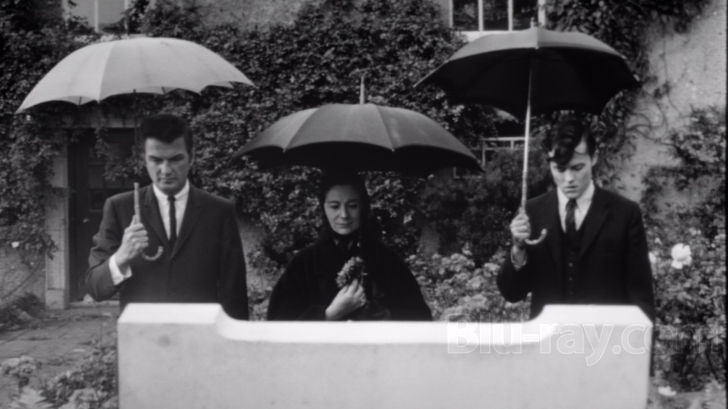
The strange thing about this obviously way low budget feature is not how campily bad it is, but in fact how nearly great it is, at least some of the time. Coppola gets us off to a bracing start with a fun rowboat scene that ends with a desperate dumping of a dead body. (It’s more than a bit interesting to note that a rowboat should play an important part in another death scene in Coppola’s Godfather trilogy). But this first sequence is an object lesson in both what is fantastic about Dementia 13, as well as what hobbles it. Coppola, even in this early stage of his career, has the basic foundations of directorial craft already at his fingertips, including a nice overhead shot to start the film, but he doesn’t quite up the anxiety levels to where they should be as the death occurs. Especially since Coppola was told to at least partially mimic Psycho, one can’t help but wonder how the Master would have staged the scene of pretty but conniving Louise (Luana Anders) attempting to unload her newly deceased husband over the side of the rowboat, something that Coppola dispatches with a minimum of fuss and bother. Can’t you just imagine Hitchcock staging this with his usual élan, making Louise suffer a bit as she attempts to complete her nefarious task? Maybe she can’t heave the body over, or she hears another boat in the distance. Or perhaps the body doesn’t sink immediately. Unfortunately Coppola is too literal in this scene, and that’s something that plagues Dementia 13 repeatedly, especially odd since it has a putative supernatural element playing just underneath the surface (both literally and figuratively, if you’ve seen the film).
To completely mismatch 1960s mass media references, over and over Coppola might be accused of something Maxwell Smart used to claim in the old Get Smart series: “Missed it by that much!” Coppola obviously knew what he wanted to accomplish, and he’s certainly competent in the basics of his craft, but either due to lack of funding, no time, or simply inexperience, Dementia 13 never really rises to the level it might have. Even simple, traditional scare tactics like jump cuts don’t always land with their intended impact, due to something as basic as a less than artful music cue (courtesy of Ronald Stein, whose score in fact is quite good most of the time). Dementia 13 therefore stands almost as an A+ effort in terms of being a “student film” of sorts. As a mainstream release, it’s often woefully inadequate.
In what is arguably the most effective sequence in Dementia 13, albeit one laden with too obvious comparisons to Hitchcock’s much more assured work in the shower scene of Psycho, Louise strips to her skivvies to plant some toys of Kathleen in the Haloran family pond, where Kathleen had met her demise seven years previously. Two shocking elements soon follow, one underwater (which I won’t spoil), and then, as Louise attempts to get out of the water, a series of quick cuts (pun intended) as an axe murderer goes about his bloody business. Again, Coppola is this close to crafting a really effective sequence, but the homage to Hitchcock just misses the mark, and in fact one of the most disturbing moments is after the actual dastardly deed, when a body is dragged willy nilly across the Irish turf.
The film is too short for its own good, rushing headlong into a Grand Guignol denouement that may strike some viewers as giggle-worthy. Corman insisted a prologue be added, a prologue which has strangely never made it to home video and isn't included here. Corman also had Jack Hill come in during post-production and tweak several scenes, so this may not really be accurately termed solely Coppola's handiwork. But despite its many (glaring) flaws, there's something uniquely fascinating about Dementia 13. It may simply be due to the fact we now know what an iconic filmmaker Coppola turned out to be. But perhaps even divorced from that eventual reality, the film is an odd but oddly interesting entry in the post-Psycho horror-slash-thriller genre (emphasis on the slash). It's a film some smart up and comer might want to revisit, filling in some blanks and taking a few more cues from Hitchcock in terms of staging and technique. That film might indeed be a "cinema classic."
Dementia 13 Blu-ray Movie, Video Quality 
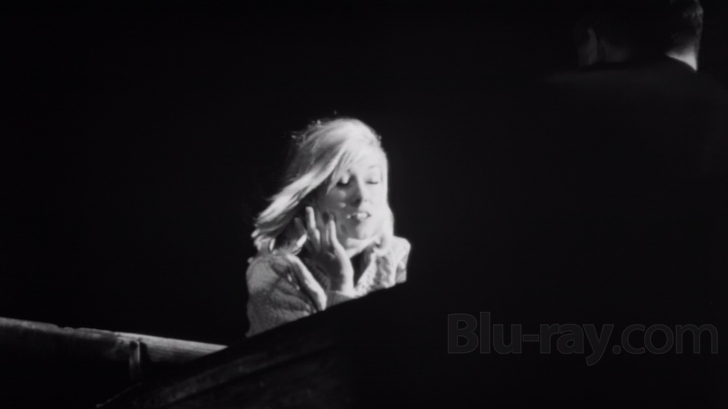
Anyone who has ever seen any of the many PD releases of Dementia 13 over the years knows already that this was far from a sharp looking film to begin with, and that same fuzzy, inchoate softness is not helped much if at all with this new high definition upgrade, via an AVC encode in 1080p and 1.78:1. This release, sourced from a 35mm print, has been significantly cleaned of scratches and other damage, but there's also been an attendant noise reduction which will no doubt drive grain lovers slightly insane. The worst thing about this release, which truthfully has hobbled every print and previous home video release of Dementia 13 I've personally seen, is the overblown contrast and appallingly soft look in midrange and short range shots. Midrange shots which are ostensibly of faces devolve into white blobs, with no facial features apparent at all. Even close-ups lack sharp, differentiated contrast, and whites frequently bloom badly. A couple of passing scenes offer reasonably rich blacks, which ups the contrast quotient considerably. There's also intermittent telecine wobble throughout the film, though it's never too troubling. This is certainly better looking than a lot of previous home video releases, at least if you don't mind DNR, but anyone looking for a topflight restoration will probably be disappointed with the results here.
Dementia 13 Blu-ray Movie, Audio Quality 
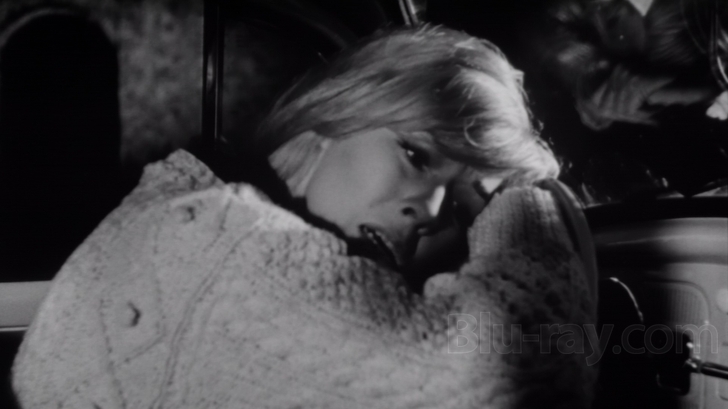
Was Dementia 13 actually not filmed in Ireland, but at Italy's vaunted Cinecittà Studios? I ask this fanciful question because the film seems to have been completely, or at least mostly, post-dubbed, as was the practice in Italian film for decades. This new Blu-ray offers two standard Dolby tracks, one in 5.1 and the other 2.0, which do nothing to improve the film's boxy sounding soundtrack. Occasional synchronization issues crop up from time to time, and while there's no egregious damage per se, this is one of the narrowest sounding tracks, with unappealing (and really pretty nonexistent) highs and lows, and a really processed sounding middle frequency range. Strangely, Ronald Stein's score comes off best in this enterprise, managing to escape the boxiness so apparent in the dialogue. In terms of surround activity on the repurposed 5.1 track, it's intermittent, to say the least, and sounds as artificial as the entire track. It would have been better to have been given a lossless version of the original soundtrack than a faux surround mix which never really provides much immersion anyway.
Dementia 13 Blu-ray Movie, Special Features and Extras 
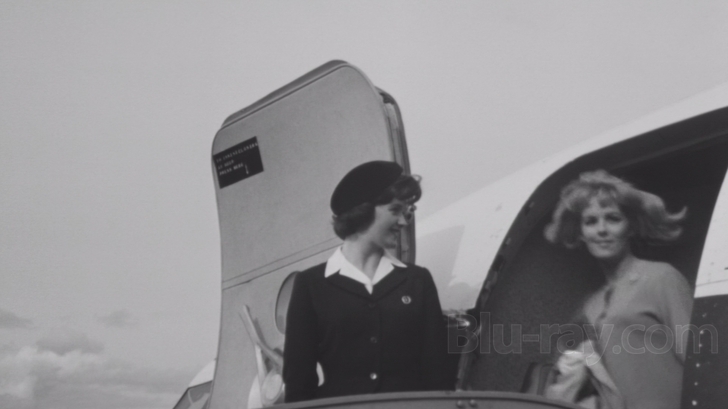
There's nothing here that I "officially" count as a supplement, though for the record the BD includes:
- DVD Copy of the film
- Postcard featuring Original Poster
- Restoration Demonstration
- Trailer
Dementia 13 Blu-ray Movie, Overall Score and Recommendation 

A lot of purists get up in arms when public domain labels like HD Cinema Classics/Film Chest can't get back to decent source elements, let alone a negative, but the fact is, anyone who's ever seen Dementia 13 should know there really weren't any stellar source elements to begin with. Anyone expecting a major upgrade in either image or audio is going to be sorely disappointed with this release. But that doesn't mean this is a worthless release. The film has been cleaned up considerably, at least compared to many (and I mean many) PD releases I've seen through the years. That cleaning includes some obvious DNR, so grainophiles will no doubt rage at the machine about this transfer. The film itself is a fascinating look at the nascent directorial style of Coppola, and for that reason alone film lovers should watch it at least once. Whether you'll want that once to be this release will depend on your tolerance for a release that is nowhere near state of the art in image or audio.
Other editions
Dementia 13: Other Editions
Similar titles
Similar titles you might also like

Alice, Sweet Alice 4K
Communion / Holy Terror | Limited Edition
1976

Marrowbone
The Secret of Marrowbone
2017

Strait-Jacket
1964

Hands of the Ripper
1971

Psych:9
2010

Deep Red 4K
Profondo rosso
1975

Tenebrae 4K
Standard Edition
1982

A Bay of Blood
Reazione a catena
1971

Scream 4
Scre4m
2011

Halloween
Unrated Collector's Edition
2007

Curse of Chucky 4K
Collector's Edition
2013

The Invisible Man 4K
2020

Blood and Black Lace
Sei donne per l'assassino
1964

The Boy
2015

The Boy
2016

Leatherface
2017

The Rental
2020

What Keeps You Alive
2018

Pyewacket
2018

Greta
2018


